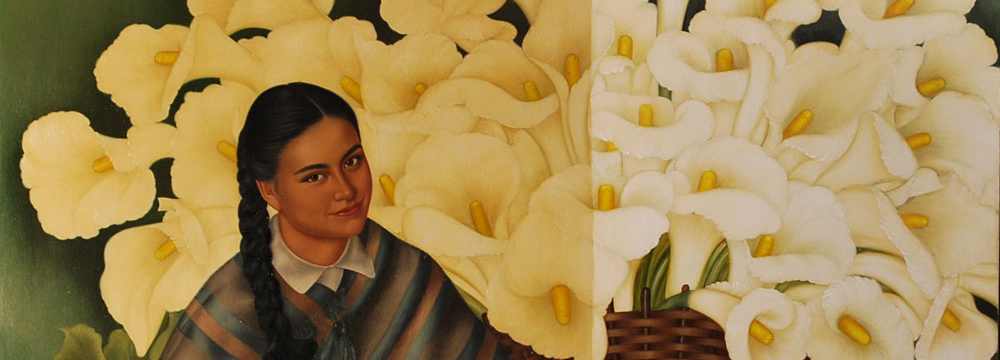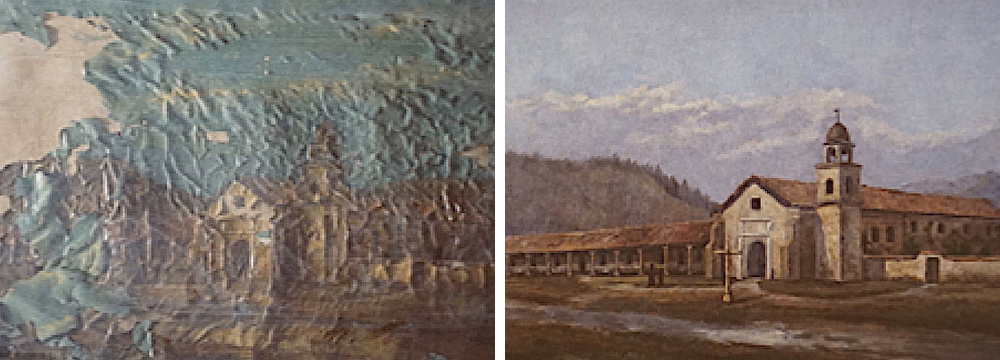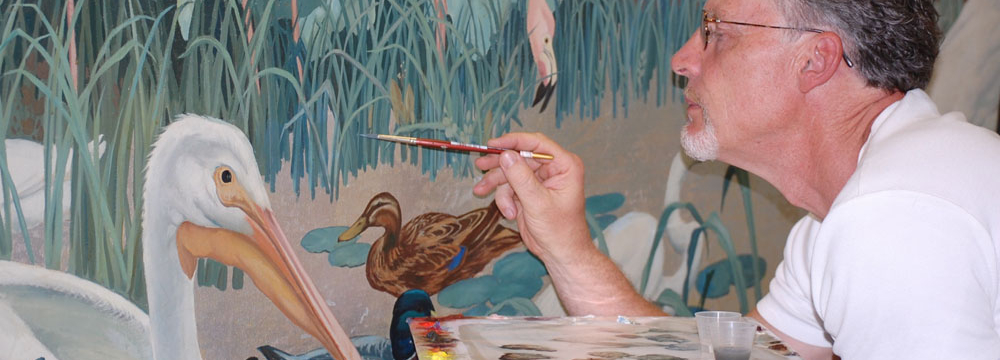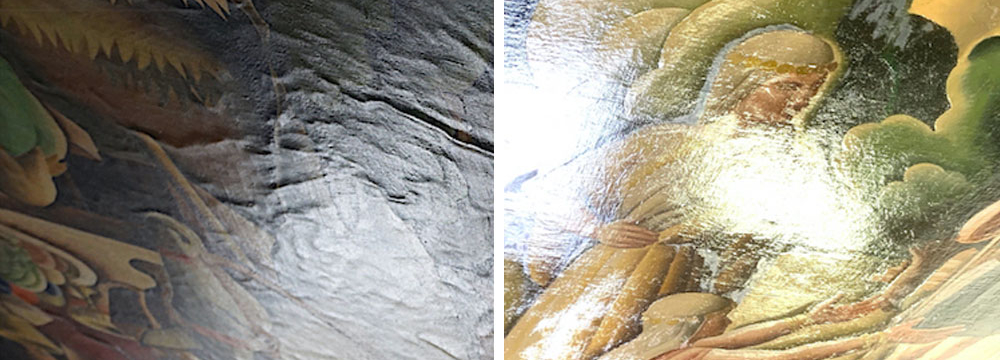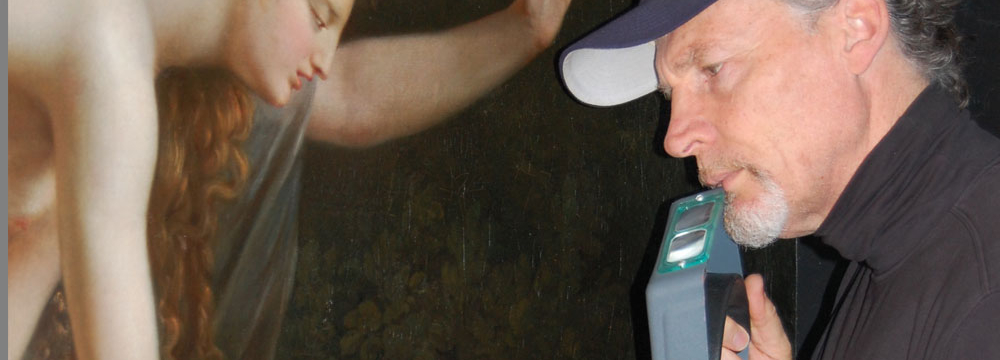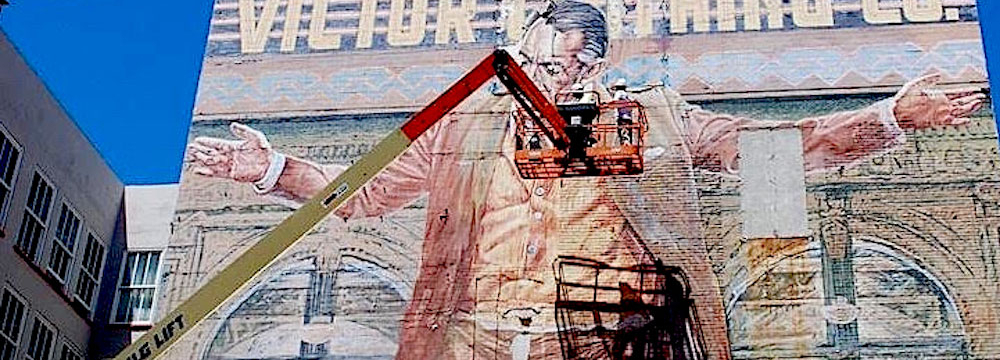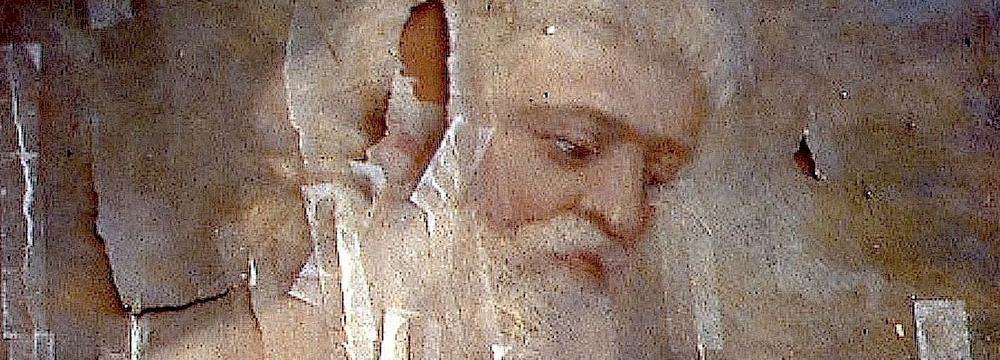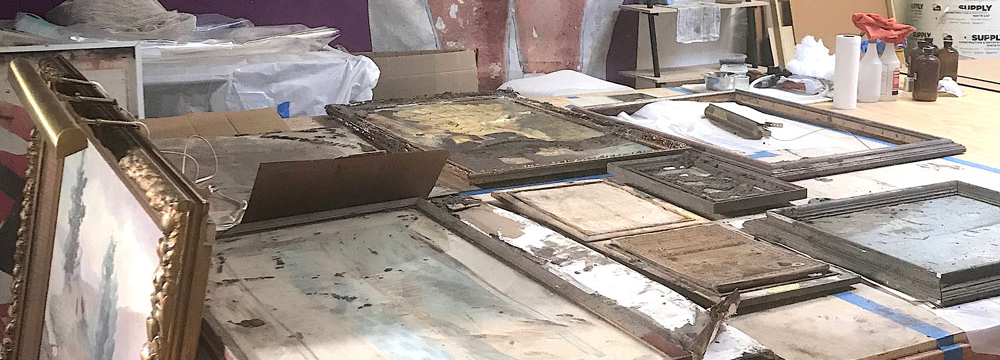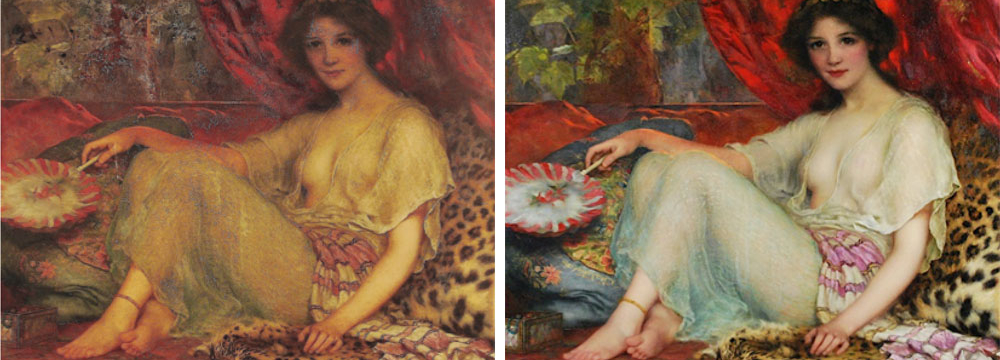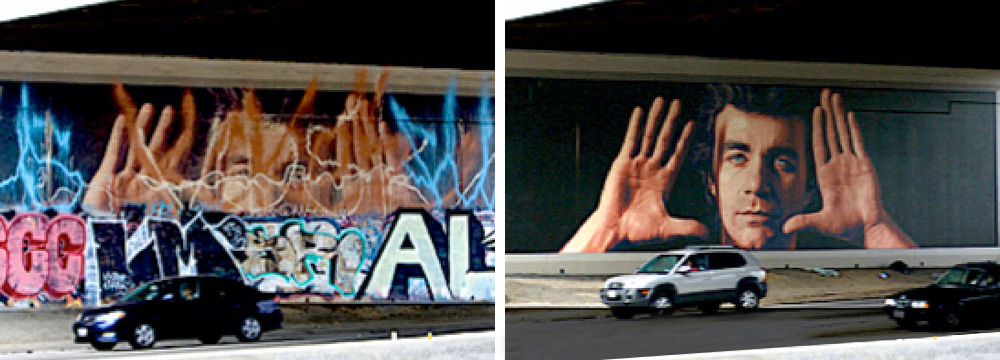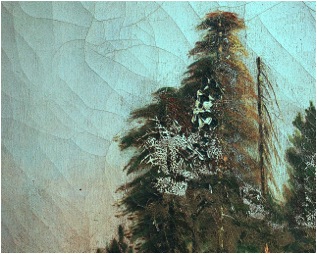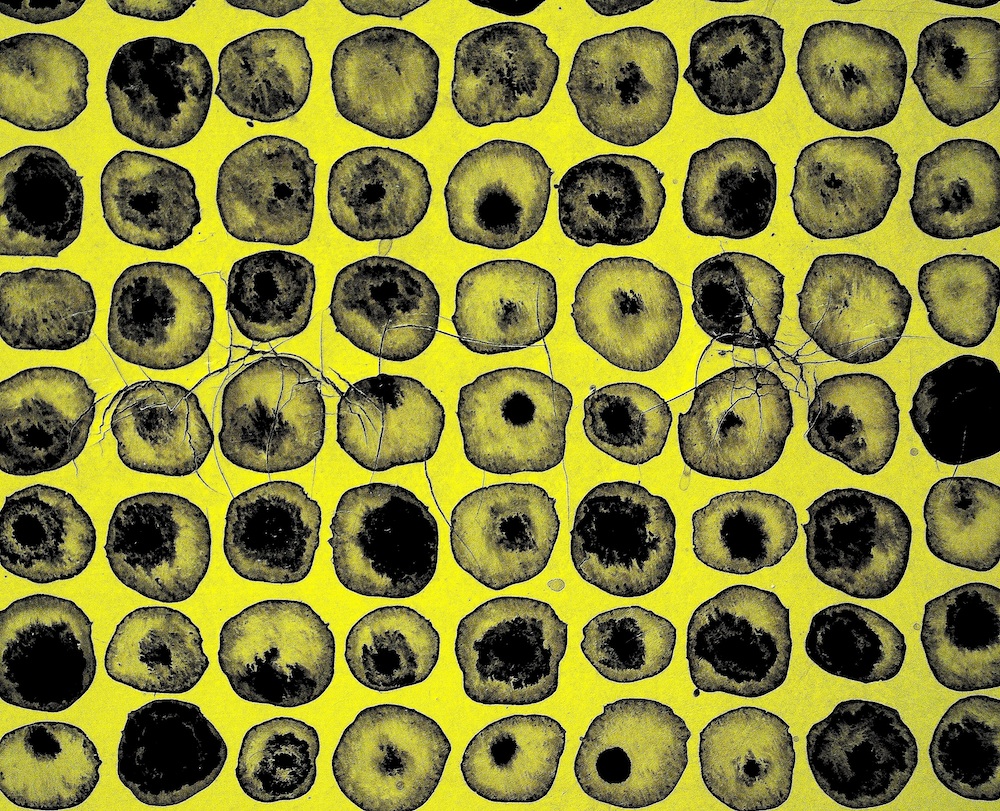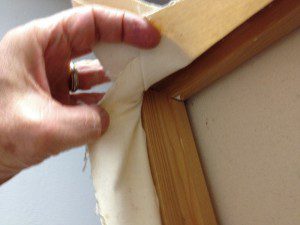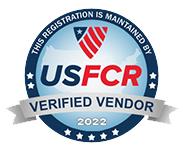You will find it interesting… and USEFUL… to read over an evaluation I wrote for a claim on a damaged painting. Some details and names have been eliminated of course.
The other day, I inspected a painting to evaluate the impact damage that occurred when movers weren’t watching a tight turn in a stairwell. The impact shattered the surface layer of paint, went through underlying layers of paint, causing sever cracking, paint loss and a puncture which also caused the fabric (cotton) to fray slightly. This damage is about 10 inches long.
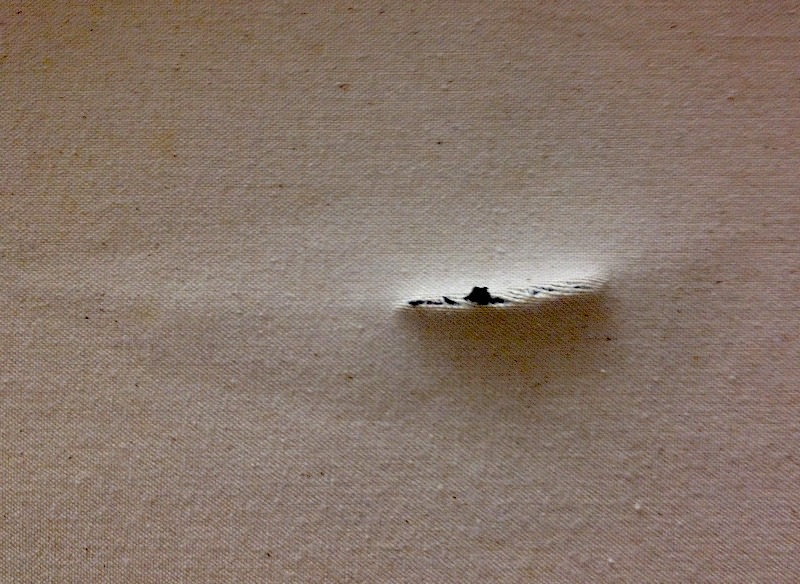
Reverse side of ripThe repair of the damage, with professional art conservation methods and ethics, will require the introduction of penetrating adhesives into the fractured layers in methods that are compatible with the technique of the painting so as not to effect any visible changes in the appearance of the surrounding areas. This consolidation will be of paramount importance for long term stability.
Once consolidated, the frayed/punctured/ripped artwork will be first consolidated. Then the fibers of the rip will be realigned and rejoined under magnification. Heat, humidity and local pressure will remove the distortion. However, if this type of local treatment ONLY is performed on the impact damage, this will not be a long term resolution. If a minimal treatment is desired then a slight pucker may have to be acceptable long term. It should also be said that the long term aging of this local area of impact may suffer continued deterioration of condition even IF the suggested repairs look perfect when completed. Patching a painting should NOT be an option as patching normally leads to a larger distortion/deformation in the future (sometime short term) and does not return the artwork to “pre-existing” or pre-damaged condition, a condition of performance for resolving fine art policy insurance claims. For a short YouTube video on the effects of patching, click here:
http://www.youtube.com/watch?v=xOk0vk3w5zs
Another very important condition to consider is the stress the impact has had on the paint layers. The layers of paint around the point of impact will surely age differently than the other surrounding areas thereby resulting in unsightly cracking patterns. There will be a very familiar bulls-eye-cracking pattern (or concentraited cracking) appear and continually get more aggravated and visible with time. Here are two examples:
The only way to avoid this type of development of the cracking patterns is to provide the substantial backing support of a properly designed lining. This overall backing process would provide the rigidity to inhibit the development of the otherwise inevitable cracking.
The stretcher bars are very poor quality for this size of painting, especially if lined. The stretcher bars do not expand and are too thin with inadequate cross bar support for a painting this size and with this much paint. We can try and make due with the original stretcher bars but the painting may not be optimally taut or the stretcher bars may warp when the lined painting is remounted.
On the reverse of the painting is the inscription by the artist which is very important to remain visible if a lining is applied. We normally trace/transfer these types of inscriptions, in the exact calligraphy of the artist and transcribe it in the same location as the original on the reverse of the new lining.
The proposed cost of the local repair would be 1/3 the price of the overall lining. One detail contributing to this factor is that the painting is oversized (over 48” in both directions) and the lining materials must be modified and be adapted.
If the lining art conservation treatment is chosen, the expected result would be a repair that will be not visible to the naked eye and will be stable for long term.
Scott M. Haskins, Art Conservator
Pres. FACL, Inc.
805 564 3438
faclartdoc@gmail.com
Please give this article a THUMBS up and leave a comment!
Keywords for this article: Ripped painting, damaged artwork, rip repair on painting, Scott M. Haskins, FACL, Inc., fine art policy insurance claim, pre-existing condition, art conservation, painting restoration, Fine Art Conservation Laboratories, patching a painting, bulls-eye-cracking pattern, concentraited cracking

